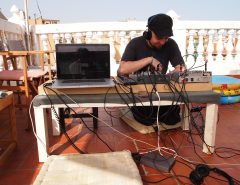
Journal of Sonic Studies es una publicación académica on-line realizada en el marco de la universidad Holandesa de Leiden, que ha publicado en abril 2012 su segundo número del que aquí pegamos la editorial. Pueden consultarse en este enlace los contendios de 2012 y en este otro los del número de 2011. El número trata de dar herramientas para pensar una estructura de la escucha, teniendo en cuenta, por ejemplo, cuestiones de género, política o las de la escucha relacionadas con el espacio del oyente.
EDITORIAL: Listenings Marcel Cobussen, Vincent Meelberg
[…] Of course, a special issue on the topic of listening should not and cannot object to such an urgent call for attentive listening. To put listening on the agenda also means to ask for concentration, time, patience, and the willingness to renounce instant acoustic gratification. To develop the ability to listen, to listen closely, attentively, and open-mindedly, is demanding; it asks for (a passive) activity, for participation, and for a suspension of countless prejudices. Careful listening sharpens all senses.
However, one of the questions (implicitly) raised in this issue is whether it is absolutely necessary to allow this Large Listening to converge with a return to the well-known canon of (male) high-art composers. R. Murray Schafer’s contribution, with which JSS2 opens, consists of a video registration of a lecture given by him during the 2011 World Forum for Acoustic Ecology in Corfu, circling around the idea, which Murray Schafer propagates since the late 1960s, that the same attentive listening is also required to open our ears towards the everyday sonic environment in which we are accustomed to live. Only through careful listening, a critical reflection on the sounds that accompany our daily activities is possible, a critical reflection which may finally lead to the development of a more conscious acoustic design.
Perhaps Murray Schafer’s message carries slightly reactionary overtones, overtones that are absent in Ruth Herbert’s essay. Her attention to everyday listening activities is no entreaty for re-designing our sonic environment, nor does it lead toward a plea for Schönberger’s Large Listening. On the contrary, she argues that we should take this everyday listening, closely linked to forms of listening that are so strongly rejected by Schönberger, very seriously. First of all, this Large Listening is revealed to be all too often permeated by periods of distraction as well as an absence of concentration solely on the pure sounds or structural composition of a piece of music; and conversely, everyday listening, in which music is connected to other sensory input, frequently does also lead to new and valuable experiences. For Herbert, music is seldom alone.
[…]





Leave a Reply
Lo siento, debes estar conectado para publicar un comentario.